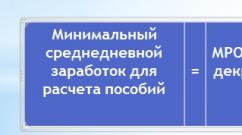Demonstrative pronouns in Spanish table. Demonstrative pronouns (Pronombres demostrativos)

— este, esta, estos, estas are used when talking about something or someone close (at arm's length) to the speaker.
— ese, esa, esos, esas are used when talking about objects that are nearby (but cannot be reached with your hand).
— aquel, aquella, aquellos, aquellas are used when talking about something or someone located far from the speaker.
Can be used with or without a noun. If used with a noun, it must agree with it in gender and number.
Me gusta mucho este restaurante.
— I really like this restaurant.
Este es mi hombre.
— This is my husband.
¿Cuál es tu casa, esta o esa?
— Which house is yours, this one or that one?
Este, esta, ese, esa, aquel, aquella may indicate proximity or distance in time.
Esta mañana tengo mucho trabajo. — I have a lot of work to do this morning.
Estuve en Colombia en 2015. Ese año hubo elecciones.— I was in Colombia in 2015. That year there were elections. (past or future, which was already mentioned earlier)
Mi abuelo nació en 1920. En aquella época reinaba Alfonso XIII. — My grandfather was born in 1920. Alfonso XIII ruled in that era. (distant past)

Esto, eso, aquello
— Esto, eso, aquello not used with nouns. Usually they talk about something unknown or obvious.
Pasame eso, por favor. — Pass this to me please.
¿Quées aquello que hay detrás de la casa? — What is this that is behind the house?
— Eso used when remembering something said.
- Se han divorciado. — Eso que dices no es cierto. — They got divorced. - What you say is not true.
— Esto also used to draw attention to the speaker's next speech.
Escucha esto: “No me gusta...” — Listen: “I don’t like...”
Demonstrative pronouns are needed if we want to select some object or object among others similar to it. For example, when we are in a store, with their help we can show the consultant that we do not want to buy this expensive and large TV, but that one over there - a little smaller, but much cheaper.
Demonstrative pronouns in Spanish. Pronombres demostrativos
This one, this one, these ones.
That, that, those.
| face | singular | plural | ||||||
|---|---|---|---|---|---|---|---|---|
| masculine | feminine | masculine | feminine | |||||
| 1 | este | this | esta | this | estos | these | estas | these |
| 2 | ese | this/that | esa | this/that | esos | these/those | esas | these/those |
| 3 | aquel | That | aquella | that | aquellos | those | aquellas | those |
Endings:
- e– one man
- a– one woman
- os- a lot of men
- as– a lot of women
Note! Understanding the use of each of the demonstrative pronouns is quite simple; it all depends on the location of the subject.
Pronoun este (—a, —os, —as) serves to highlight an object or being that is closer to the speaker, and when correlated with time to indicate the present tense:
Este periódico que está sobre la mesa es ruso. – This newspaper that lies on the table is Russian.
Esta mañana he visto a mi amigo. – This morning I saw my friend.
Pronoun ese(—a, —os, —as) indicates objects or beings that are closer to the speaker, and when indicating time - the time period immediately preceding or following the moment of speech:
Ese periódico que está sobre la mesa es de ayer. – This newspaper that lies on the table is from yesterday.
Esos días hemos descansado mucho. – All these (last) days we have had a lot of rest.
The pronoun aquel (aquella, -os, -as) identifies objects and creatures that are located away from the interlocutors or outside their field of vision:
- Aquellos periódicos que están en la biblioteca son cubanos. – The newspapers in the library are Cuban.
- Aquella película, la hemos visto ya. – That movie, we've already seen it.
Indefinite pronouns - adjectives
- He leído alguna carta. – I read some letter.
- Toda profesión es interesante. – Any profession is interesting.
- Lo hacen los empleados mismos. – The employees themselves will do this.
- Unos lectores quieren saber más. – Several readers want to know more.
- Llevo varios días pensando en ello. – I've been thinking about this for several days now.
- En cualquier caso no es asunto mío. – In any case, it's none of my business.
Indefinite pronouns - nouns
These pronouns are used independently, replacing nouns in speech.
These include:
| pronouns changing by gender and number | alguno – somebody, somebody otro- another todo- all tanto – as much as uno – one, some, every ninguno- nobody |
| pronouns that do not change either by gender or by number | alguien – someone, someone, anyone algo – something, something, anything cada cual- everyone, everyone nadie- nobody nada– nothing |
| pronouns that have gender forms but do not change in number | varios (-as)- some cada uno (cada una)- everyone, everyone |
| pronouns that change only by number | Quienquiera (quienesquiera) – anyone, anyone, everyone cualquiera (cualesquiera) – anyone, anything, anyone, everyone |
- Alguien viene. – Someone is coming (coming).
- Cualquiera de vosotros puede hacerlo. – Any of you can do this.
- ¿Quieren comprar algo? – Do you want to buy something?
- Cada cual toma su rumbo. – Everyone goes their own way.
- ¡Cada uno tiene sus gustos! – Everyone has their own tastes.
- Nadie está contento aquí. – Nobody is happy.
Exercises
Exercise No. 1
Put the correct form of the demonstrative or indefinite pronoun
- Will you be giving your niece anything for her birthday?– ¿Vas a regalarle a tu sobrina para su cumpleaños? (la sobrina – niece)
- She was not faithful to any (any) man in her life.– No ha sido fiel a hombre en su vida. (ser fiel a – to be faithful to someone)
- Neither of them knows how to use a microwave. – ellos sabe usar el microondas. (usar – use, el microondas – microwave)
- We prefer a different type of activity.– Preferimos Tipo de actividad. (la actividad – activity)
- I suspect that you are hiding something else from me.– Sospecho que me ocultas más. (sospechar – suspect, ocultar – hide)
- Do you know anyone (any person) who could teach foreigners?– ¿Conocen persona que sepa enseñar a los extranjeros? (enseñar – teach, el extranjero – foreigner)
- Every person has the right to live well. – persona tiene derecho a vivir bien. (el derecho - right)
- The man on the bridge is my uncle. – persona que está en el puente es mi tío. (el puente - bridge)
- Nobody believes me when I'm serious. – me cree cuando hablo en serio. (en serio - seriously)
- You've been here for several hours and haven't decided on a movie yet?– ¿Lleváis aquí horas y aún no habéis decidido la película? (decidir algo – decide something, decide on something)
- Are they going to do anything about this problem?– ¿Piensan hacer respecto a problem? (respecto a - regarding something)
- None of my brothers have been to Spain. – de mis hermanos ha estado en España.
- We believe that every person should follow their dreams.– Creemos que persona debe seguir su sueño. (el sueño – dream, dream)
- Have you seen any of my friends?– ¿Has visto a de mis compañeros? (el compañero - friend)
- Anything you say will be questioned. – cosa dicha por ti será cuestionada. (dicho – said, ser cuestionado – question)
- Why do people think that life is better in another country?– ¿Por qué la gente cree que en país se vive mejor?
- Who is this girl you're dating today?– ¿Quien es Chica con la que sales hoy?
- I think about you every day.– Pienso en ti día.
- Do you want to go to that restaurant?– ¿Os apetece ir a restaurant? (apetecer – want)
- This guy is very brave. – Chico es muy valiente. (valiente – brave)
- The same incident happened a few days ago.–El incidente ha ocurrido hace días. (el incidente - case)
- Each of you must clean one room. – debe limpiar una habitación.
- I return each of your things to you.– Te devuelvo de tus cosas.
- Everyone has what they deserve. – tiene lo que se merece. (merecerse – to deserve)
- I always wake up if someone is looking at me.– Siempre me despierto si me mira.
- Anyone (anyone) can learn languages. – Puede aprender lenguas.
- Nothing brings me as many memories as that place. – me trae tantos recuerdos como lugar. (el recuerdo - memory)
- You should buy yourself those glasses, they suit you.– Debes comprarte gafas, te quedan bien. (las gafas - glasses, quedarle bien a alguien - to go to someone, sit well on someone)
- Do you subscribe to this magazine?– ¿Estás suscrito a revista? (estar suscrito a – to be subscribed to)
- We'll be back in a few minutes.– Volvemos en minutos.
1. ¿Vas a regalarle algo a tu sobrina para su cumpleaños? 2. No ha sido fiel a ningún hombre en su vida. 3. Ninguno de ellos sabe usar el microondas. 4. Preferimos otro tipo de actividad. 5. Sospecho que me ocultas algo más. 6. ¿Conocen alguna persona que sepa enseñar a los extranjeros? 7. Toda persona tiene derecho a vivir bien. 8. Aquella persona que está en el puente es mi tío. 9. Nadie me cree cuando hablo en serio. 10. ¿Lleváis aquí varias horas y aún no habéis decidido la película? 11. ¿Piensan hacer algo respecto a ese problema? 12. Ninguno de mis hermanos ha estado en España. 13. Creemos que cada persona debe seguir su sueño. 14. Has visto a alguno de mis compañeros? 15. Cualquier cosa dicha por ti será cuestionada. 16. ¿Por qué la gente cree que en otro país se vive mejor? 17. ¿Quién es esa chica con la que sales hoy? 18. Pienso en ti cada día. 19. ¿Os apetece ir a aquel restaurante? 20. Este chico es muy valiente. 21. El mismo incidente ha ocurrido hace varios días. 22. Cada uno de vosotros debe limpiar una habitación. 23. Te devuelvo cada una de tus cosas. 24. Cada cual tiene lo que se merece. 25. Siempre me despierto si alguien me mira. 26. Cualquiera puede aprender lenguas. 27. Nada me trae tantos recuerdos como aquel lugar. 28. Debes comprarte aquellas gafas, te quedan bien. 29. ¿Estás suscrito a esa revista? 30. Volvemos en unos minutos.
- " onclick="window.open(this.href," win2 return false > Imprimir
A pronoun is an independent part of speech that indicates objects, signs, quantity, but does not name them
Pronouns are divided into several groups: personal (indicate the speaker or person to whom speech is addressed), demonstrative (indicate an object or quality), possessive (indicate the affiliation of an object or person).
Personal pronouns
The personal pronoun is almost always not indicated, since at the end of the verb it is already clear which person we are talking about. If there are two in a sentence actors and two predicates, then personal pronouns are not omitted never:
Yo soy feliz, y él no lo es.
Respectful treatment Usted It doesn’t change by gender, but it changes by numbers.
Pronouns plural have a gender: at the end there is a vowel o for m.r. and a – for w.r.
Stressed forms are used in combination with prepositions (see below), for example:
para ti, con ella, de nosotros, a vosotros.
The following constructions use personal pronouns rather than accents:
- Como ella, el, yo, etc.
- Entre tú y yo
- Excepto ella, yo, nosotros, etc.
- Incluso/incluyendoél, tú, ellos, etc.
- Según ella, yo, vosotros, etc.
Demonstrative pronouns
| Pronoun | Examples |
| Este - this one Esta - this Esto is Estas - these Estos - these |
Esta casa es la más bonita. This house is the most beautiful. Esto es todo lo que sé. That's all I know. Estos hombres llevan aquí todo el día. These guys spend all day here. Estas chicas son muy atractivas. These girls are very attractive. |
| Ese - that one Esa - that one Eso - that Esos - those Esas - those |
Ese perro está loco; ladra día y noche. |
|
This pronoun indicates an object that is not even more distant. |
Pronoun este replaces the last mentioned noun, aquel- to the penultimate one:
Manuel es mayor que Juán. Este tiene 4 años y aquel es de 7 años. (este se refière a Juán, aquel se refière a Manuel)
Possessive pronouns
| Singular | Plural | Translation |
| mi tu su |
Mis tus sus |
My - mine Yours - yours |
| Nuestro (nuestra) Vuestro (vuestra) Su |
Nuestros (nuestras) Vuestro (vuestras) sus |
Our – ours Yours - yours Theirs, yours – theirs, yours |
Possessive pronouns have another form, stressed (here all forms change according to gender and number):
| Singular | Plural | Translation |
| Mio, mia Tuyo, tuya Suyo, suya |
Míos, mías Tuyos, tuyas Suyos, suyas |
My - mine Yours - yours His, hers, yours, yours – theirs, yours |
| Nuestro, nuestra Vuestro, vuestra Suyo, suya |
Nuestros, nuestras Vuestros, vuestras Suyos, suyas |
Our – ours Yours - yours Theirs, yours – theirs, yours |
The stressed form is used instead of a noun (so as not to repeat itself), when addressing, or when there is already a demonstrative pronoun (that, that..) or a numeral before the defined noun. They are translated in the same way as unstressed ones. Always used INSTEAD of a noun, i.e. WITHOUT him.
Example: No son mis libros, son tuyos. These are not my books, these are yours.
Stressed and unstressed forms. Case pronouns
| Impact form | Dative (to whom) | Accusative (who? what? ) |
| mi | me | me |
| ti | te | te |
| el, ella; usted | le | lo, la; le, lo, la |
| nosotros | nos | nos |
| vosotros | os | os |
| ellos, ellas; ustedes | les | los, las; les, los, las |
In all cases, except for the dative and accusative, stressed forms of the pronouns and are used. One exception should be remembered: with the preposition con in the forms of the 1st and 2nd singular units (I and you), the pronouns merge: conmigo, contigo.
Voy contigo. I'll go with you.
Coma sin nosotros. Eat without us.
¿Has oído esta historia de nosotros? Have you heard this story about us? or Did you hear this story from us?
Mi hermano siempre se me ríe. My brother always laughs at me.
Cree que todo el mundo está conrta el. I think everyone is against him.
Me gusta mi casa. Estoy muy cómodo en él. I like my home. I feel very comfortable in it.
No quiero hablar acerca ella. I don't want to talk about her.
Additions in the dative and accusative casecan't express only shock form pronouns: unstressed forms are used, or unstressed forms in combination with stress.
When using multiple pronouns, the dative case comes first, then the accusative. If two 3rd person pronouns come in a row, then the first one changes to se, for example: Se lo digo (wrong: le lo digo) - I tell him this.
Pregúnta me. Ask me.
Telo digo. I'm telling you this.
Case pronouns are used after infinitive, participle or imperative form verbs and are written together (“dí melo" -"tell me this"). If the verb is in any other form, then the pronouns are placed before him: Nos lo pide. He asks us to do this.
IN verb constructions two options are possible: Lo Estoy estudiando = Estoy estudiándo lo.
Other pronouns
|
Todo - everything, everything, everything; cada - everyone, every todo el día - all day todo el libro - the whole book todo lo que necesito - everything I need Dame algún ejemplo. Give me some example. Soy de la misma opinion. I'm of the same opinion. |
Demonstrative pronouns - Pronombres demostrativos are necessary to highlight some object, subject, phenomenon among others similar or analogous. For example, when we are at the market, with their help we can indicate to the seller that we do not want this cabbage - small and rotten, but that one - beautiful and large.
Demonstratives are divided into two groups: demonstrative adjective pronouns (they are placed before the noun) and demonstrative noun pronouns (they replace the noun itself). Demonstrative pronouns highlight an object both in time and space. In addition, they vary by gender and number.
Demonstrative pronouns-adjectives in their meaning are somewhere close to the article. Therefore, they are always placed before the noun, agreeing in gender and number. In this case, the article is not used. However, these pronouns more accurately show the location of the object in relation to the speaker and his interlocutor. There are three groups of such pronouns:
a) Pronouns este, esta, estos, estas, indicating that the object or object is close to the speaker, i.e. in close proximity to it. If pronouns are related to time, then in this way they indicate the present tense.
Location in space:
Esta revista es nueva. – This magazine is new. (i.e. a magazine that is in the hands of or located next to the speaker).
Relationship with time:
Esta mañana he limpiado toda la casa. – This morning I cleaned the whole house (I cleaned it today, on this day).
b) The pronouns ese, esa, esos esas indicate that the object is located at some distance from the speaker, or rather closer to the interlocutor than to himself. If the conversation is about time, then these pronouns show the time that precedes the moment of speech or comes immediately after it.
Location in space:
¿Esa camisa es también cara? – Is this shirt expensive too? (i.e. a shirt, which, for example, is located next to the seller).
Relationship with time:
Esos días hemos trabajado mucho. – These days (the last days) we worked a lot.
As you can see, these pronouns are usually translated into Russian as the words “this/this” and “these”, but their meaning is somewhat different.
c) The pronouns aquel and aquella indicate that the object being discussed is far from both the speaker and the interlocutor.
Location in space:
Aquellas flores son preciosas. - Those flowers are beautiful.
Relationship with time:
Aquellos días fueron muy interesantes. -Those days were very interesting.
Demonstrative pronouns-nouns
There are demonstrative pronouns-nouns, which are very similar to adjective pronouns, but have acento - stress and are used separately, without nouns, or rather replace them:
Este chico estudia inglés, aquél - el alemán. – This guy is studying English, that one (the word “guy” is missing) is studying German.
In addition, there are demonstrative pronouns eso, esto, aquello, which are collective and have no accent. They are never used with animate persons and do not have a plural form. And although they are often referred to as neuter pronouns, it should be remembered that in Spanish There are only two genders: male and female. In a sentence they stand alone and serve as the subject. These pronouns are used when:
a) it is still unclear what we are talking about:
¿Qué es eso? -What do you have there?
b) when the interlocutor understands what you are talking about, since you talked about it before, or when you replace an entire phrase so as not to repeat yourself:
¡Pero eso es imposible! - But this (what you just said) is impossible!
¡OJO! If there are other definitions before the noun in addition to the demonstrative pronoun, then they are placed after the demonstrative pronoun:
Estos dos chicos son mis hermanos. “These two guys are my brothers.”
See how these pronouns are used in proverbs and sayings:
Este mundo es un pañuelo. - (This) world is small.
Aquel es tu amigo, que te quita de ruido. – The friend who stops the noise.
Bien ríe aquel que ríe el último. - He who laughs last laughs best.
Aquella es bien casada, que no tiene suegra ni cuñada. - That woman married successfully, who has neither a mother-in-law nor a sister-in-law.
Practical exercises
Translate the following sentences into Spanish:
- This is not true.
- That (event) happened in Barcelona.
- That guy is my brother.
- Maria is not interested in this.
- Not this shirt, the other one (that one).
- This dress is not the same as that one.
- This tie is black, and that one is blue.
- This guy is a liar.
- This is a red coat, this is blue, and that is green.
- Eso no es verdad.
- Aquello pasó en Barcelona.
- Aquel chico es mi hermano.
- Eso no interesa a María.
- No es esta camisa, es aquella.
- Este vestido no es como aquél.
- Esta corbata es negra y aquélla es azul.
- Este chico es un mentiroso.
- Este abrigo es rojo, ése es azul y aquél es verde.
Demonstrative pronouns serve three main functions in Spanish:
- Determine the location of the object
Note that pronouns aquel, aquella,… V spoken language are used less frequently and are often replaced by ese, esa,… So, the last example from the table might sound like
Aquel vestido que lleva aquella señora es precioso
but it wouldn't look very natural.
Very often, in the same sentence, two objects at different distances are contrasted. In this case, when translating into Russian, we have to complete and clarify:
Este vestido no me gusta, prefiero ese(=el que está más lejos o el que llevas tú en las manos) – This(which I have in my hands) I don’t like the dress, I prefer over there(which is in your hands or not far from me)
¿Ves ese edificio ahí al fondo? No, ese no, aquel(=el que está todavía más lejos) – See over there the building over there? No, not that's nearby, A over there in the distance
Three types of demonstrative pronouns correspond to the three adverbs of place and are often used together with them:
Este de aquí, esta de aquí, estos de aquí, estas de aquí
Ese de ahí, esa de ahí, esos de ahí, esas de ahí(used especially often)
Aquel de allí, aquella de allí,...
Pronouns ese, esa, esos, esas often used with a hint of disapproval:
–Mira esa… = Mira esa mala mujer / Mira esa chica que se cree Dios / Mira esa chica cuyo comportamiento o forma de ser no apruebo nada - Look at this is a phenomenon ("beauty", I imagined, an idiot...)
–Yo con ese no salgo = No voy a salir con ese imbécil/engreído/feo/…. - WITH like this I'm not dating
- Indicate the time of the event
In this case also pronouns aquel, aquella, ... are used more often in book speech.
- Point to a specific character in speech
In this meaning, demonstrative pronouns are used without qualifying words.
Pronouns este, esta, estos, estas used to introduce new characters in a story or when making acquaintances:
Estos son dos gallegos que vuelven de la misa… (introduce unos futuros personajes) – ___ Two Galicians return from service (introduces new characters)
Mira, esta es Nuria, es una amiga de la universidad (presenta a una amiga) – This Nuria, a friend from university
Please note that in Russian we use the pronoun to introduce strangers This, which we do not change either in gender or in number, hence the typical mistakes of Russians:
*Esto es Juan, un amigo – This is my friend Juan(Right: Este es Juan, un amigo)
In book speech, these pronouns are used to identify characters who are close or distant in the text:
Esos/Aquellos fueron un día… – First(the Madrid people, who were reported earlier than the Catalans) one day went...
En el pueblo vivían dos madrileños y dos catalanes. Estos fueron un día… – In that village lived two Madridis and two Catalans. Latest(the Catalans, who were reported later than the Madrid ones) one day went...
Special cases of using pronouns eso
Word eso found in set expressions that serve to achieve certain communicative goals:
- Eso es/Eso
. Used to show that the interlocutor has successfully expressed our thoughts:
– La gente no vive nada bien, falta comida, hay mucho paro... – People live poorly, there is not enough food, high unemployment...
–O sea, que las cosas van de mal en peor – In general, it’s getting worse and worse
–Eso / Eso es – Exactly
. - ¿Y eso?
Means the same as ¿Por qué? but, moreover, conveys strong surprise:
–Mi hijo ha decicido dejar los estudios – The son decided to quit his studies
–¿Y eso?¡Si decías que le encantaba! – Oh well? Are you serious? You said that he really liked it! - Y eso que. Gives more weight to previous facts due to new information:
–Jorge ha montado este proyecto solo,¡ y eso que tiene cuatro hijos! – Jorge did this project alone, and this despite the fact that he has four children! - Eso sí.
This connective contrasts positive information with previous negative information:
–¿Qué, se gana mucho trabajando en la universidad? - Well, do they pay a lot at the university?
–Qué va, nos pagan una miseria. Eso sí: siempre tenemos alumnos particulares - Why, they pay pennies. But we always have students













